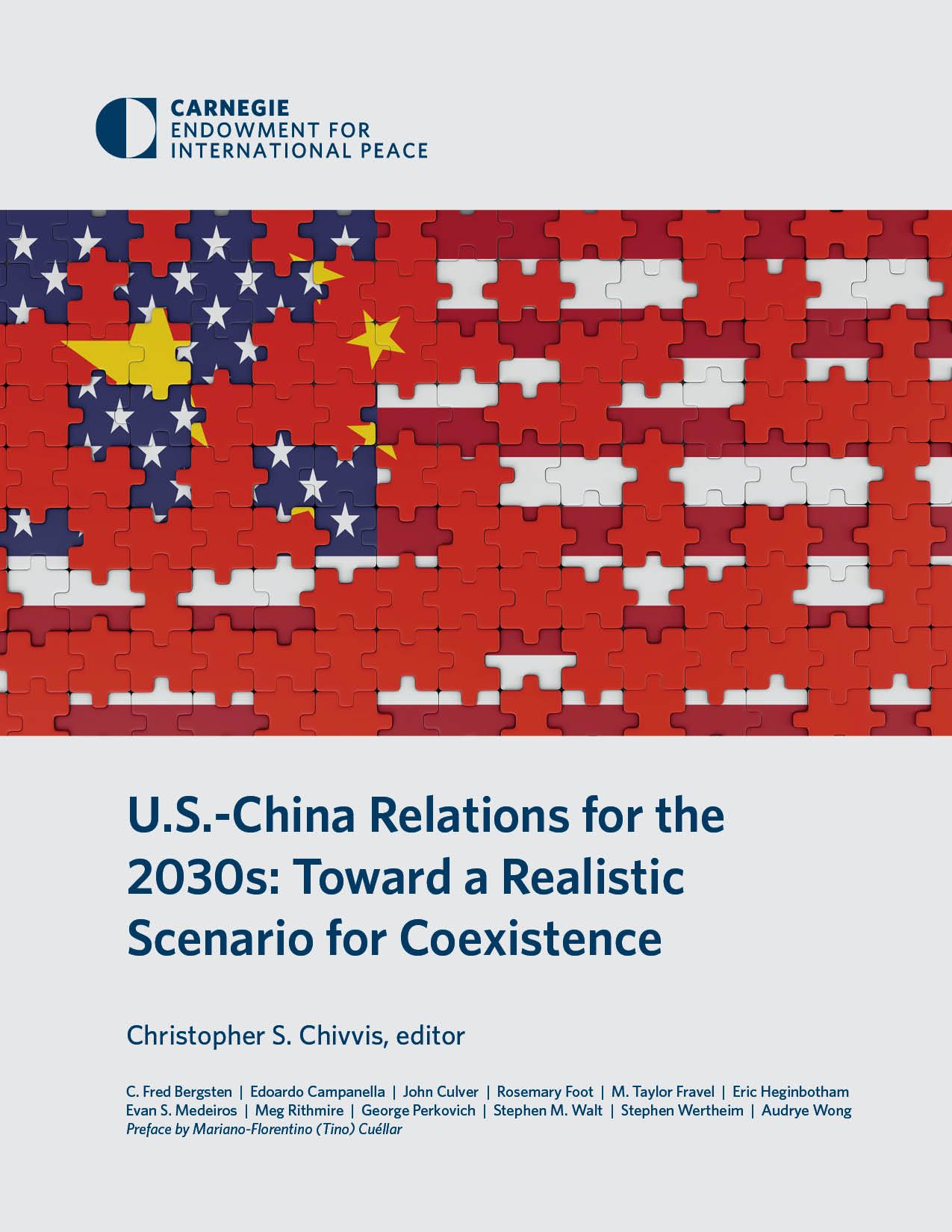United Nations Report on Human Rights Violations in Afghanistan and Implications for Sustainable Development Goals
Executive Summary
A United Nations report released by the UN Assistance Mission in Afghanistan (UNAMA) and the UN Human Rights Office documents significant human rights violations committed by the de facto authorities against Afghan nationals who have returned to the country. These actions contravene international law and severely undermine progress toward multiple Sustainable Development Goals (SDGs), particularly those concerning peace, justice, gender equality, and reduced inequalities.
Violations of SDG 16: Peace, Justice and Strong Institutions
The report’s findings indicate a systematic failure to uphold the principles of SDG 16, which calls for promoting peaceful and inclusive societies, providing access to justice for all, and building effective, accountable, and inclusive institutions.
- Erosion of Rule of Law (Target 16.3): Returnees, especially former government officials and security force members, have been subjected to arbitrary arrests, torture, and ill-treatment, despite promises of amnesty. This demonstrates a collapse of the rule of law and a lack of access to justice.
- Increased Violence (Target 16.1): The documented abuses, including beatings and threats to personal security, represent a direct contradiction to the goal of reducing all forms of violence.
- Failure of Institutions (Target 16.6): The persecution of specific groups highlights the absence of effective, accountable, and transparent institutions capable of protecting citizens’ rights.
- Violation of International Agreements (Target 16.A): The forced return of refugees by neighboring countries violates the principle of non-refoulement under the 1951 Refugee Convention, undermining international cooperation and law.
Setbacks for SDG 5: Gender Equality and SDG 10: Reduced Inequalities
The report highlights how specific groups are disproportionately affected, representing a significant regression for gender equality and the reduction of inequalities.
- Gender Persecution (SDG 5): Women and girls face systemic discrimination. Testimonies reveal a severe lack of job opportunities and restrictions on freedom of movement, directly opposing Target 5.1 (end discrimination) and Target 5.5 (ensure women’s full participation). The issuance of ICC arrest warrants for Taliban leaders for gender persecution underscores the severity of this issue.
- Targeting Vulnerable Populations (SDG 10): The persecution of returnees based on their past professions (media workers, civil society) or affiliations deepens societal inequalities, contrary to Target 10.2 (promote inclusion) and Target 10.3 (ensure equal opportunity).
- Unsafe Migration (Target 10.7): The forced return of individuals to a country where they face a substantial risk of human rights violations is in direct opposition to the goal of facilitating orderly, safe, and responsible migration.
Socio-Economic and Humanitarian Crises: Impact on SDG 1, SDG 3, and SDG 8
The human rights violations occur within a broader context of a severe humanitarian crisis, further impeding progress on fundamental development goals.
- Decent Work and Economic Growth (SDG 8): The inability of returnees to work due to fear, threats, and restrictions prevents their economic reintegration and undermines Target 8.5 (full and productive employment) and Target 8.8 (protect labor rights).
- Poverty and Well-being (SDG 1 & SDG 3): The ongoing humanitarian crisis, characterized by poverty and hunger, makes sustainable reintegration impossible. The reported physical and psychological abuse directly harms the health and well-being of returnees, contravening the core tenets of SDG 3.
Recommendations for Upholding the 2030 Agenda
The United Nations has issued several recommendations aimed at mitigating the crisis and realigning actions with international law and the Sustainable Development Goals.
- The de facto authorities in Afghanistan must cease all human rights violations and protect the rights of all returnees, a foundational step for achieving SDG 16.
- Member states must halt forced returns to Afghanistan, conduct individual risk assessments, and uphold the principle of non-refoulement, in line with their commitments under SDG 10.
- The international community should increase financial support to facilitate the safe and dignified reintegration of returnees, contributing to SDG 1 and SDG 8.
- States are urged to provide safe and accessible legal pathways for Afghans facing credible threats of persecution, thereby supporting the objectives of SDG 10 and SDG 16.
Analysis of Sustainable Development Goals in the Article
1. Which SDGs are addressed or connected to the issues highlighted in the article?
-
SDG 16: Peace, Justice and Strong Institutions
- The article’s central theme is the violation of human rights by the Taliban authorities, including torture, ill-treatment, and arbitrary arrests. It highlights a breakdown of the rule of law and the failure of institutions to protect citizens, directly connecting to the goal of promoting peaceful, just, and inclusive societies. The UN’s call for adherence to international law and an end to persecution reinforces this link.
-
SDG 5: Gender Equality
- The article explicitly states that women and girls are among the most affected groups. It details how the Taliban have “severely restricted the rights of women and girls, imposing movement restrictions and banning access to education and work.” The issuance of ICC arrest warrants for Taliban leaders for the “persecution of women and girls” is a direct reference to the issues covered by this goal.
-
SDG 10: Reduced Inequalities
- The report focuses on the vulnerability of Afghan refugees and returnees, a key demographic in discussions of inequality. The violation of the “principle of non-refoulement” and the call for “safe pathways for Afghans seeking to leave” relate directly to ensuring safe and responsible migration, a component of reducing inequality between and within countries.
-
SDG 8: Decent Work and Economic Growth
- The article mentions that the human rights violations hindered the ability of returnees “to work, move freely, and participate in daily life.” It specifically notes a “lack of job opportunities” for women and the country’s “economic collapse,” which are central concerns of SDG 8.
-
SDG 1: No Poverty & SDG 2: Zero Hunger
- The article describes the context in Afghanistan as a “dire humanitarian crisis characterized by poverty, hunger, and economic collapse.” This directly connects the plight of the returnees to the fundamental goals of eradicating poverty and hunger.
-
SDG 17: Partnerships for the Goals
- The UN’s recommendation that “states increase financial support to Afghanistan to facilitate the reintegration of returnees” is a call for international cooperation and partnership to achieve development goals, which is the essence of SDG 17.
2. What specific targets under those SDGs can be identified based on the article’s content?
-
Target 16.1: Significantly reduce all forms of violence and related death rates everywhere.
- This is identified through reports of “torture, ill-treatment, arbitrary arrests, and threats to their personal security” perpetrated by the Taliban against returnees.
-
Target 16.3: Promote the rule of law at the national and international levels and ensure equal access to justice for all.
- This is evident in the UN’s call for Taliban authorities to “comply with international human rights law” and the condemnation of the violation of the “principle of non-refoulement” under the 1951 Refugee Convention. The lack of recourse for victims highlights the absence of access to justice.
-
Target 5.1: End all forms of discrimination against all women and girls everywhere.
- The article directly points to this target by describing how the Taliban have “severely restricted the rights of women and girls, imposing movement restrictions and banning access to education and work.”
-
Target 5.2: Eliminate all forms of violence against all women and girls in the public and private spheres.
- The mention of ICC arrest warrants for Taliban leaders due to their “alleged involvement in the persecution of women and girls” directly relates to this target.
-
Target 10.7: Facilitate orderly, safe, regular and responsible migration and mobility of people.
- This target is addressed through the discussion of forced returns, the violation of the principle of non-refoulement, and the UN’s recommendation to “provide safe pathways for Afghans seeking to leave if they face threats of abuse.”
-
Target 8.5: Achieve full and productive employment and decent work for all women and men.
- The article implies a failure to meet this target by stating that returnees’ ability to work was hindered and that women, in particular, faced a “lack of job opportunities.”
3. Are there any indicators mentioned or implied in the article that can be used to measure progress towards the identified targets?
-
Indicator 16.1.1: Number of victims of intentional homicide per 100,000 population.
- While no specific numbers are given, the reports of “torture, ill-treatment, and threats” imply a high risk of violence and death, which this indicator measures.
-
Indicator 16.3.1: Proportion of victims of violence in the previous 12 months who reported their victimization to competent authorities.
- The article implies this proportion is near zero, as the “competent authorities” (the Taliban) are the perpetrators of the violence. The UN report itself serves as an alternative mechanism for documenting these victimizations.
-
Indicator 5.1.1: Whether or not legal frameworks are in place to promote, enforce and monitor equality and non-discrimination on the basis of sex.
- The article implies that the legal framework is actively discriminatory, citing the Taliban’s imposition of “movement restrictions and banning access to education and work” for women and girls.
-
Indicator 10.7.2: Number of countries with migration policies that facilitate orderly, safe, regular and responsible migration and mobility of people.
- The article implies a negative measure for this indicator by criticizing the forced return of Afghans and the violation of the principle of non-refoulement, suggesting that the policies of some countries are not safe or responsible.
-
Indicator 8.5.2: Unemployment rate, by sex, age and persons with disabilities.
- This is implied by the mention of a “lack of job opportunities” and the specific restrictions that have banned women from work, suggesting a very high unemployment rate, especially for women.
-
Indicator 1.2.1: Proportion of population living below the national poverty line.
- The description of a “dire humanitarian crisis characterized by poverty, hunger, and economic collapse” directly implies that a significant and likely growing proportion of the population is living in poverty.
4. Table of SDGs, Targets, and Indicators
| SDGs | Targets | Indicators Identified or Implied in the Article |
|---|---|---|
| SDG 16: Peace, Justice and Strong Institutions | 16.1: Significantly reduce all forms of violence and related death rates everywhere.
16.3: Promote the rule of law and ensure equal access to justice. |
Implied presence of conflict-related deaths and violence (torture, ill-treatment).
Implied low proportion of victims reporting violence to authorities, as authorities are the perpetrators. Failure to adhere to international law (non-refoulement). |
| SDG 5: Gender Equality | 5.1: End all forms of discrimination against women and girls.
5.2: Eliminate all forms of violence against women and girls. |
Implied existence of a discriminatory legal framework restricting women’s rights to work, education, and movement.
Mention of persecution of women and girls, leading to ICC arrest warrants. |
| SDG 10: Reduced Inequalities | 10.7: Facilitate orderly, safe, regular and responsible migration and mobility of people. | Implied lack of safe migration policies, evidenced by forced returns and violation of the principle of non-refoulement. |
| SDG 8: Decent Work and Economic Growth | 8.5: Achieve full and productive employment and decent work for all. | Implied high unemployment rate, especially for women who are banned from many jobs, and for returnees who face threats. |
| SDG 1: No Poverty | 1.2: Reduce at least by half the proportion of men, women and children of all ages living in poverty. | Implied high proportion of the population living in poverty due to the “dire humanitarian crisis.” |
| SDG 17: Partnerships for the Goals | 17.3: Mobilize additional financial resources for developing countries. | The UN’s call for increased financial support to Afghanistan for the reintegration of returnees. |
Source: jurist.org







